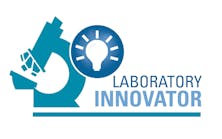The prevalence of food allergies is increasing. A recent U.S. study estimates that 5% of children under the age of 5 years and 4% of teens and adults have food allergies. Symptoms of food allergies can range from mild to severe and can cover a wide variety of presentations (i.e., gastrointestinal, cutaneous, and respiratory). In December 2010, the National Institute of Allergy and Infectious Diseases, or NIAID, part of the National Institutes of Health, working with more than 30 professional organizations, federal agencies, and patient advocacy groups, led the development of “best practice” clinical guidelines for the diagnosis and management of food allergies. Based on an expert panel's comprehensive review and objective evaluation of the recent scientific and clinical literature on food allergy, the guidelines provide concise recommendations to a wide variety of healthcare professionals on how to diagnose and manage food allergies. The guidelines also provide practical clinical recommendations to clinicians which speak to the importance of the diagnostic tools with which laboratories assist clinicians in managing food allergies. This brief review of the NIH Guidelines for the Diagnosis and Management of Food Allergy is meant to help laboratories understand the importance of their role in providing diagnostic tools to help clinicians with the diagnosis, management, and reassessment of this increasingly prevalent medical problem.
Diagnose food allergies early.
According to a recent study by the Centers for Disease Control and Prevention (CDC), children with food allergies are two to four times more likely to have other, related conditions, such as asthma and upper respiratory symptoms, than children without food allergies. Children with food allergies may also be more likely to develop other allergic diseases. For those reasons and others, the expert panel states, “Early diagnosis can lead to better management of food allergies and reduce the risk of exposure to food antigens.”
Confirm a specific diagnosis.
The guidelines make it clear that basing the diagnosis of food allergies on either history or physical examination alone may lead to an erroneous diagnosis and to unnecessary restrictive diets that could have adverse nutritional and social consequences. For this reason, the expert panel stresses the importance of diagnosing food allergies early and confirming a specific diagnosis through the use of testing. The guidelines recommend and describe many valuable tests [e.g., skin prick testing, food elimination diets, oral food challenges, and specific IgE blood tests (sIgE)] available to assist in the identification of foods that may be provoking IgE-mediated allergic reactions. It is important to note, the expert panel makes clear, that each test is valuable and has its own strengths and weaknesses, and that no single test, when used alone, is diagnostic of food allergies.
Manage food allergies closely.
The expert panel states that food allergies can only be managed by allergen identification and avoidance or treatment of symptoms. It is recommended that patients with documented IgE-mediated food allergies should avoid ingesting their identified specific allergen or allergens. Carefully planned allergen-free diets can provide sufficient nutrients to maintain a healthy and active life.Nutritional counseling and regular growth monitoring is recommended for all children with food allergies. The reassessment of food allergies is also recommended, based on the fact that an important part of the natural history of a food allergy is determining the likelihood and the actual time of its resolution. In children, a drop in sIgE levels over time is often a marker for the onset of tolerance to the food. Regular follow-up testing ensures proper patient and medication management.
Robert Reinhardt, MD, DABFM, is Chief Medical Officer, ImmunoDiagnostics Division, Thermo Fisher Scientific.




